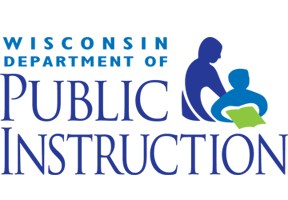Barb Novak contributed today's post. More of her thinking about research can be found here.
I mentioned a PLC I'm part of in a previous post. We meet monthly and discuss a piece of research (selected by one of the members) at each meeting. The study I'm writing about today will be discussed by my PLC.
I'm sharing the study simply to give access to how I process research when I read - how I organize my thinking before, during, and after reading research. This post is not intended to be an endorsement of the research or its conclusions.
"The Science of Reading and Its Educational Implications"
Mark Seidenberg (2013)
The article can be accessed in the following ways:
- Badgerlink does not include the full-text of this article. You can request the article, as published, by contacting your local public library. Click here for a link to the citation.
- Click here to access the full text (posted by the Language and Cognitive Neuroscience Lab). (The page numbers below correspond to the PDF available at this link.)
- Click here to access a manuscript-version of the article, published through the National Institute of Health.
Why this article?
The perspective offered in this article - that of an educational psychologist - is one I am not overly familiar with. In addition, the author, Dr. Mark Seidenberg, is a professor at the University of Wisconsin, Madison.
Argument:
This article is not research. Instead, Seidenberg forms an argument in responsive to this question: "If the science [of reading] is so good, why do so many people read so poorly?" (p. 331).
Main Points:
The "intrinsic properties of English" (p. 334) are not to blame for America's low levels of literacy. Instead, ". . . how reading is taught is indeed a significant part of the literacy problem in the US and other countries" (p. 340).
Seidenberg argues that current classroom practice is guided by educational practice rather than science. He writes, ". . . science and education occupy different territory in the intellectual world. . . The cultures of education and science are radically different: they have different goals and values, ways of training new practitioners, criteria for evaluating progress. The two cultures communicate their research at separate conferences sponsored by parallel professional organizations attended by different audiences, and publish their work in different journals. There are publishers that target one audience and not the other. These cross-cultural differences, like many others, are difficult to bridge" (p. 342). This cultural divide is characterized by differences in what evidence is accepted by educators and scientists, educators' reliance on a socio-cultural approach, and a lack of educator understanding of science.
Seidenberg also discusses the achievement gap, specifically for African Americans. He discusses how dialect could impact reading achievement, suggesting that "differences between dialects could potentially affect children's ability to benefit from classroom experience" (p. 353).
Limitations:
- The article focuses on English; no other languages are discussed.
- The article represents thinking from a single field, educational psychology.
- Has anyone in the education community written a response to this article?
- What are other viewpoints about the impact of dialect on reading achievement and instruction? Do others in educational psychology and education agree with Seidenberg's argument?
Seidenberg, M.S. (2013). The science of reading and its educational implications. Language Learning and Development, 9(4): 331 - 360). DOI: 10.1080/15475441.2013.812017







